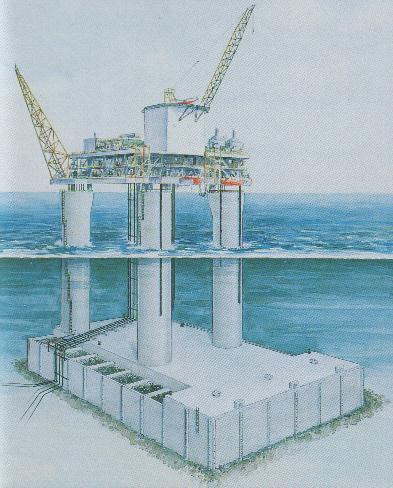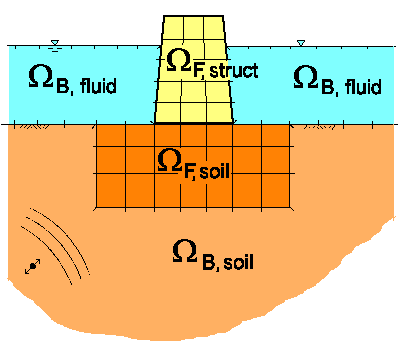

The dynamic behaviour of submerged or partially submerged structures crucially depends on the interactions of the fluid (water), the structure, and the soil (e.g. the seabed). Therefore, the effects of these interactions are of major significance in the analysis. Furthermore, the semi-infinite extension of the water and of the soil has to be taken into account appropriately. The same applies to the material nonlinear behaviour of the structure and the soil.
Up to now, coupled fluid–structure systems are analysed mostly by combining Finite Elements for the structure with Boundary Elements or special Infinite Finite Elements for the fluid. Borders — like the seabed — are either not considered at all, or they are approximated by impedance conditions in normal direction. Incoming earthquake waves usually are approximated by acceleration boundary conditions at the contact areas.
Based on recent advances in vibro-acoustics, fluid–structure interaction and soil–structure interaction, a computational model is developed that facilitates both realistic modelling of the water-saturated seabed and simulating incoming earthquake waves. For this purpose a coupled FEM–BEM analysis is employed, in which Finite Elements represent the structure ΩF,struct and the near field of the soil ΩF,soil, whereas the water ΩB,fluid and the far field of the soil ΩB,soil are modelled with Boundary Elements.
 |
 |
The principal aim of this project is the development of an appropriate analysis model for coupled fluid–soil–structure systems under earthquake excitation. This model should allow for nonlinear behaviour that may occur in the structure as well as in the seabed (close to the structure). The Results will be compared with solutions obtained using different numerical models, as well as with experimental data, if existent.
| Researcher: | Dipl.-Ing. Christian Hagen | Ph. +49 - 40 - 42878 - 4215 |
| Supervisor: | Prof. Dr.-Ing. Otto von Estorff | Ph. +49 - 40 - 42878 - 3120 |
| Supported by Deutsche Forschungsgemeinschaft (German Research Council) Revised: March 2002 |
||